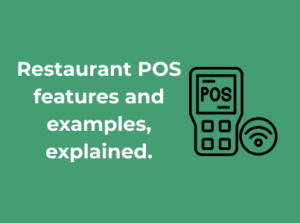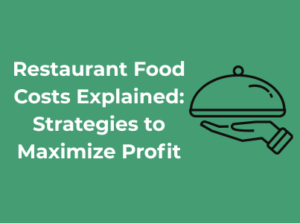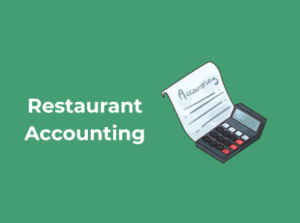Deciding to sell your restaurant can stir up a mix of emotions—it’s not a simple decision. After all, your restaurant is more than just a business; it’s a space where you’ve invested time, energy, and passion. But recognizing when it’s time to step away is absolutely critical—both for your wellbeing and your business. Let’s talk about how to make that call when the time comes.
Your Emotional Readiness Is Just as Important
Beyond practical reasons, it’s important to check in with yourself emotionally. Selling a business is a major life transition, especially if it’s one you’ve built from the ground up. Take some time to reflect. Are you ready to let someone else take the reins? Do you feel at peace with the decision? Or is fear or guilt clouding your judgment? Journaling or even chatting with a trusted friend can help you sort through these emotions.
The Market Matters
Timing is everything, and that includes understanding the market climate. Are restaurants in your area selling quickly, or has the industry hit a slump? Ideally, you’ll want to sell during a strong market, when there’s healthy demand and a good chance of getting a fair price. However, even if the market isn’t perfect, personal timing often takes precedence. If now feels like the right time for you, don’t ignore that instinct.
Plan Before Acting
Once you sense it might be time to sell, don’t rush into putting your restaurant on the market. Use this realization as an opportunity to start actively planning. This might include organizing your financial records, improving any weak areas of the business, or just consulting with professionals like brokers or financial advisors early on.

Setting the Right Asking Price: Beyond the Basics
When it comes to selling your restaurant, setting the right asking price isn’t just about crunching numbers—it’s about finding that sweet spot where what your restaurant is truly worth meets the realistic expectations of potential buyers. In this section, we’ll dive deeper into the factors that matter most for pricing your eatery and how to avoid common pitfalls in the valuation process. Let’s explore how you can confidently set an asking price that’s not only fair but also attractive to buyers.
1. Start with a Professional Valuation
First and foremost, consider hiring a professional to conduct a valuation of your restaurant. Sure, you might have a rough figure in mind based on sales or your own investment over time, but experienced appraisers bring more to the table. They evaluate multiple factors such as your equipment, lease terms, reputation, and even your competitive position in the market. A professional valuation not only justifies your asking price but also shows buyers you’ve done your homework.
2. Understand Financial Performance
Buyers are primarily interested in what your restaurant can make them. Your EBITDA (Earnings Before Interest, Taxes, Depreciation, and Amortization) often serves as a central metric to assess profitability. An industry rule of thumb is that restaurants typically sell for a multiple of their EBITDA—anywhere from 1.5x to 3x, depending on stability, growth potential, and other factors. Review your financial records thoroughly for the past three years, ensuring they are accurate, detailed, and professionally prepared. Good numbers build trust!
3. Factor in Tangible and Intangible Assets
Your restaurant is worth more than its cash flow—it’s also about the assets. Don’t forget to account for tangible items like kitchen equipment, furnishings, and inventory. Want to go even deeper? Assess your intangible assets, which might include branding, goodwill, local community recognition, and any proprietary recipes or processes. These elements often hold hidden value that resonates with certain buyers, especially those looking to skip the startup struggle.
4. Research Your Local Market
The dynamics of the local market can significantly influence what buyers are willing to pay. Research other restaurant sales in your area to understand pricing trends. Compare square footage, location, and the type of dining experience they offer. If your competitors are pricing similarly, buyers will expect you to be competitive as well. Be realistic—an overpriced restaurant will sit on the market far longer than one that’s priced to sell.
5. Consider “Add-Backs”
If you’re unfamiliar with “add-backs,” they’re essentially adjustments to your financial statements that reflect non-recurring expenses or those tied to your ownership. For example, personal expenses like a company car or one-time costs like a renovation can be removed from the expense line to show what the business might earn under new ownership. Highlight these when presenting your price to ensure potential buyers see the full earning potential.
6. Avoid the Overpricing Trap
It’s tempting to aim high and hope for the best, but overpricing your restaurant can scare off serious buyers or signal a lack of understanding of its true value. Instead, focus on presenting a well-reasoned price, supported by data and real-world benchmarks. Remember, a reasonably priced restaurant can attract more offers, potentially leading to better negotiations and a quicker sale.
7. Create Room for Negotiation
While it’s important to set a realistic price, always leave a little room for negotiation. Buyers often expect to negotiate, and leaving some flexibility ensures they feel like they’re walking away with a good deal. Be strategic—know your bottom line but start slightly higher to give yourself that wiggle room.
Creating a Clear Sales Package: More Than Just Numbers
When preparing to sell your restaurant, one of the most important steps is creating a sales package that tells your business’s story—one that’s organized, compelling, and easy for potential buyers to digest. It’s not just about throwing some numbers into a spreadsheet. You’re essentially handing an “everything-you-need-to-know” guide to make your restaurant stand out and entice buyers to take that next step. Let’s break it down!
What Is a Sales Package Anyway?
A sales package is more than just financial data. Think of it as the resume for your restaurant. Does it only focus on numbers? No—it highlights what makes your business tick, what makes it valuable, and why the buyer should take the leap. This document needs to be as convincing as it is thorough. A strong sales package can make the difference between a buyer walking away or making a serious offer.
What Should Your Sales Package Include?
Here’s what to include in your restaurant’s sales package to make it comprehensive and attractive:
- Executive Overview: Begin with the big picture. Highlight the concept of your restaurant, its location, what makes it a standout, and include a brief history. Think of this as your “elevator pitch” to grab attention right away.
- Financial Information: Buyers will naturally want to know about the financial health of your restaurant. Include details such as:
- Profit and loss (P&L) statements (for at least the last 3 years).
- Balance sheets.
- Tax returns.
- Any projections, if available.
These numbers show if the restaurant is consistently profitable and worth the investment!
- Operations Information: Outline the daily workings of the restaurant. Include:
- Staffing structure (roles and salary ranges).
- Vendor and supplier relationships.
- Inventory processes.
- Operating procedures.
Buyers need to know how they can step into your shoes without the business skipping a beat.
- Assets and Equipment: Create an inventory of the equipment that comes with the sale—kitchen equipment, furniture, POS systems, and even décor. This gives buyers a clear understanding of the tangible things they’re paying for.
- Lease Details: For most restaurants, the lease is a critical piece of the puzzle. Make sure you include:
- Length of lease remaining.
- Renewal terms.
- Rental escalation clauses or any other relevant conditions.
This helps buyers understand their responsibilities moving forward.
- Target Market and Marketing Efforts: Who is your customer base? Share information about your target demographic and any marketing campaigns you’ve executed that brought results.
- Growth Opportunities: Outline areas where the new owner could expand or improve. Whether it’s better utilizing delivery services or extending hours, potential buyers want to see the upside potential.
Organization Is Key
Presentation matters. Imagine getting a cluttered, disorganized packet of information—would you feel confident moving forward? Probably not. Your sales package should be well-structured, visually appealing, and easy to navigate. Use clear section headings, bullet points, and charts to make the information digestible. If possible, work with a professional broker or designer to make it shine.
Be Honest Yet Strategic
Full transparency is crucial when preparing your sales package. Buyers will uncover any discrepancies during due diligence, so it’s best to address any challenges upfront. Acknowledge issues like a tougher-than-average market or stiff competition, but also emphasize how the business has overcome obstacles or where the opportunities lie. Being honest builds trust.
Preparing Your Restaurant for Buyer Visits
So, you’ve decided to sell your restaurant, and you’ve found some interested buyers—congratulations! Now comes the crucial step of preparing your restaurant for those all-important buyer visits. First impressions are everything, so this stage can make or break the sale. Let’s dive into how you can present your restaurant in the best light possible and leave buyers envisioning themselves as the next proud owner.
Start with a Deep Clean and Refresh
It goes without saying, but a clean restaurant is a must when inviting potential buyers for a visit. However, this isn’t just about wiping down chairs or sweeping the floor—you’ll need to go above and beyond your usual routine.
- Deep clean kitchen appliances, including ovens, grills, and even the unreachable corners.
- Ensure the dining area is spotless—polished tables, no scuffs on walls, and clean windows.
- Don’t forget the bathrooms! Buyers will assume any laxity here reflects the cleanliness of your entire operation.
- Repaint chipped walls or touch up décor to give the restaurant a fresh look without major renovations.
Think of this as giving your restaurant a mini-makeover—it might cost a little time and money, but the payoff will be worth it when buyers are impressed with a well-maintained space.
Organize and Show Off the Back-End
Many buyers are seasoned professionals in the restaurant industry, and they’ll want to look beyond the dining area. They’ll likely ask to see your kitchen, storage areas, and office space, so don’t neglect these behind-the-scenes sections.
- Declutter: Remove unnecessary or old equipment, organize storage shelves, and ensure walk-in coolers/freezers are clean and organized.
- Ensure Functionality: Buyers will want to see how your kitchen setup flows during service hours. Make sure all equipment is in working order and demonstrate efficiency during their visit, if possible.
- Show Documentation:** Have permits, health inspection reports, and maintenance logs readily available. This reinforces confidence that you run a tight ship.
The goal here is to show that all systems are in place, functioning, and more than ready to handle a smooth takeover.
Set the Stage for an Experience
Potential buyers aren’t just looking at numbers; they’re imagining the possibilities. Help them visualize the dream by creating an inviting, bustling atmosphere.
- Invite them during operational hours if possible, so they can experience your restaurant while it’s in action.
- Ensure your staff is at their best: attentive, friendly, and knowledgeable. Educate them about the potential sale to avoid miscommunication during buyer visits.
- If your restaurant has a signature dish or drink, let the buyer sample it—this can be the selling point that wins them over!
Think of this as staging a home. Buyers need to picture themselves taking over the space seamlessly.
Communicate Transparency
Lastly, always be upfront about any areas that might need improvement. Buyers appreciate honesty, and transparency builds trust. If there’s aging equipment, a lease renewal timeline on the horizon, or any challenges with suppliers, address them before the buyer finds out later. Present solutions or recommendations to ease their mind.
Finding the Right Buyer: Where and How
So, you’ve decided to sell your restaurant. Congrats! That’s a huge step in itself. But now, it’s time to focus on one of the most critical pieces of the process: finding the right buyer. You’re not just handing over your keys; you’re entrusting someone else with the heart and soul of something you poured your energy, sweat, and love into. Let’s dive into how to find that “perfect match” who can take your restaurant to the next chapter.
What Does the “Right Buyer” Even Mean?
The “right buyer” isn’t necessarily the person with the deepest pockets. Sure, selling for a good price matters, but this decision is just as much about legacy, commitment, and fit. Are you looking for someone who shares your vision or someone with fresh new ideas? Do you want an experienced operator or a budding entrepreneur with passion? Think about your goals – both financial and emotional.
Where to Start Your Buyer Search
Finding a serious buyer might feel like looking for a needle in a haystack, but don’t worry; you’re not going into this blindly. Here are some prime places to kick off your search:
- Industry Brokers: A specialized business broker can connect you with potential buyers already on the hunt for restaurant opportunities. They know the marketplace, the paperwork, and the players. Plus, they save you a ton of time!
- Online Business Sale Platforms: Websites like BizBuySell or LoopNet are popular platforms where buyers browse listings for restaurants and other businesses for sale. Make sure your listing stands out with great photos, essential details, and a compelling description.
- Local Industry Events: Attend restaurant-focused networking events or industry gatherings. Sometimes, the best buyers are already active in hospitality and are considering expanding.
- Your Own Network: Don’t underestimate the power of word-of-mouth. Let your network know you’re selling. A friend, supplier, or loyal customer might know a great candidate or be interested themselves!
Making Your Restaurant Attractive to Buyers
Here’s the thing: it’s not just about finding buyers – it’s about attracting the right ones and keeping them interested. To do that, you’ll need to think like a buyer for a moment. Ask yourself, “What would I want to know about this restaurant?” Here’s what works:
- Show Them the Numbers: If someone is serious, they’ll want a clear picture of your financial performance. Get your books in order and be ready to share past profits, costs, and growth potential. Transparency is key.
- Highlight the Restaurant’s Strengths: Focus on what makes your space unique. Is it a loyal customer base? A high-traffic location? Stellar online reviews? Showcase the best-selling points!
- Be Honest About Challenges: No restaurant is perfect, and buyers know that. Be upfront about what could improve – whether that’s marketing, menu updates, or equipment – so expectations are realistic.
Red Flags to Watch Out For
While you’re busy vetting potential buyers, keep in mind that not every interested party is a great fit. Be cautious about:
- Unrealistic Offers: If someone lowballs you beyond reason, they may not understand the business value or could be hinting at future complications.
- Lack of Experience or Commitment: Is this buyer really passionate about the restaurant industry, or are they viewing this as a side gig? You want someone excited to give it 100%.
- Unwillingness to Share Financing Info: A serious buyer should be prepared to demonstrate how they plan to finance the purchase.
Negotiation Tactics That Work for Restaurant Sales
Congratulations! You’ve made it this far — you’ve set the stage beautifully, found potential buyers, and now you’re at one of the most critical steps: negotiation. This part of the process can make or break the sale, so it’s important to step into discussions with a game plan. Let’s dive into some tried-and-true negotiation strategies that will give you an edge while keeping the relationship with your potential buyer intact.
1. Enter the Negotiation with Clear Priorities
Before you sit down to discuss numbers or conditions, take some time to think about what your top priorities are. Is the total selling price the most important factor, or are you also looking for terms around transitioning or keeping your staff employed? Knowing your “must-haves” versus “nice-to-haves” will save you a lot of stress during the process. Write them down and keep them front and center as discussions unfold.
2. Know Your Value and Defend It with Confidence
Buyers will naturally push to get the best deal possible (wouldn’t we all?), but this doesn’t mean you should doubt the value of your restaurant. Have your research and financial documents ready as proof of your worth. For example:
- Show comparisons with similar restaurant sales in your area.
- Highlight unique aspects of your restaurant, like location, loyal customer base, or proprietary recipes that make you stand out.
- Point to steady revenue growth or cost-cutting strategies you’ve already implemented. Data doesn’t lie!
Being firm but approachable lets buyers know you’re serious without being overbearing.
3. Find Room for Flexibility
While sticking to your core goals is essential, it’s also important to recognize areas where you can yield a little to create a win-win outcome. Maybe you can agree to slightly lower upfront payment if the buyer agrees to an earnout or hire-back agreement. Always consider creative solutions that reduce barriers for both sides while protecting your long-term benefits.
4. Keep the Emotional Factor in Check
Let’s be honest — your restaurant probably feels like your baby. You’ve poured your heart and soul into it, so letting go can stir powerful emotions. However, emotions can cloud judgment during negotiations. Take a step back, breathe, and focus on the facts when discussions get heated. It’s okay to take breaks or even sleep on major decisions if needed.
5. Listen Actively
Negotiations aren’t just about convincing someone to agree with your terms. They’re also about understanding the other side’s needs and concerns. By listening actively, you can identify opportunities for compromise or even uncover ways to sweeten the deal for both parties. Maybe the buyer is nervous about managing staff. Could you offer a short-term training period post-sale to ease their concerns? Listening opens doors to solutions you may not have even considered.
6. Don’t Be Afraid to Walk Away
Not every deal is the right deal, and if a buyer continues pushing you into terms that jeopardize your core goals, it’s okay to walk away. It’s better to hold out for a buyer who values what your restaurant brings to the table than settle for a deal you’ll regret later. Remember, patience often pays off.
Transitioning Ownership Smoothly: A Seller’s Role
So, you’ve found the perfect buyer for your beloved restaurant—congratulations! But wait, you’re not quite done yet. Transitioning ownership is arguably one of the most delicate and crucial phases of selling a restaurant. Get this stage right, and you’ll not only set your buyer up for success but also preserve the legacy and reputation of the business you’ve worked so hard to build. Let’s walk through the essentials for making this transition stress-free and effective for everyone involved.

Be Open, Honest, and Available
It might sound obvious, but ensuring an open and smooth line of communication with the buyer is one of the most important things you can do during this stage. Remember, for the buyer, this is likely both an exciting and overwhelming experience. They’ll look to you for guidance as they navigate their new business venture.
Some ideas to ensure clarity from day one:
- Offer a detailed timeline for the transition process, including when you’ll officially step away.
- Be honest about any challenges the business has faced. Buyers want transparency, not surprises.
- Encourage them to ask lots of questions—and commit to answering promptly and comprehensively.
Document, Document, Document!
One of your biggest responsibilities in this phase is to ensure the buyer has all the documentation they need to run the restaurant effectively. Having an organized arsenal of files not only makes onboarding easier for the buyer but also leaves a professional final impression of you as a seller.
Here are a few key documents you shouldn’t overlook:
- An operations manual covering all daily processes, from opening and closing checklists to cleaning routines.
- Employee onboarding materials, including training guides and job descriptions.
- Vendor and supplier contact lists, along with purchase agreements and payment terms.
- Past service records for equipment and warranties for any machinery.
- Licensing and permits required for business operations in the area.
Think of this as passing along the keys to the kingdom—both literally and figuratively!
Smooth Handover for Staff and Customers
Beyond paperwork, there’s an emotional and personal aspect to this transition as well. Restaurants are often tight-knit communities, and a shift in ownership can feel unsettling to employees and customers alike. To avoid any unnecessary stress or uncertainty, a gradual and thoughtful handoff is key.
Here’s how you can make it seamless:
- Introduce the New Owner: Whether it’s during a team meeting, an informal gathering, or even a customer-facing event, personally introduce the buyer as the new face of the establishment. This builds trust and minimizes speculation.
- Stay Involved Temporarily: Agree on a training period where you can mentor the new owner hands-on. Whether it’s a week or a month, this will help ease the buyer into their role while reassuring staff and customers of the transition’s stability.
- Emphasize Consistency: Encourage the buyer to maintain some familiarity during the early days, like keeping the same menu and staff, to reassure loyal patrons and employees that the transition is in good hands.





